Chicago to host three-day Chess for Freedom conference

FIDE and the Cook County Sheriff’s Office (Chicago, USA) organize the first in-person Chess for Freedom Conference, which takes place from May 17-20, 2023, in Chicago, USA. The event features many experts from all around the world who will take the stage over three days to introduce concepts and approaches to using chess as a rehabilitation tool for incarcerated people. The three-day conference schedule includes the Cook County Jail tour, meetings with the Cook County Department of Correction administration and staff, followed by presentations and interactive sessions with members of the penitentiary administrations, policymakers, and federation officers, aimed at the introduction of chess as a tool for education and social inclusion in prisons of different countries. The conference event schedule is as follows: May 17th: Guests arrive. May 18th: Cook County Jail tour (includes meeting with CCDOC administration and Program’s staff). May 19th: Conference plenary session featuring various breakout topics. May 20th: Sightseeing throughout downtown Chicago. May 21st: Guests’ departure. The conference will be broadcast live on FIDE’s Youtube channel. Additionally, its participants have an option of joining the Zoom call and asking questions to the speakers. In order to join via Zoom, you would need to register via the following link. Registration About the Chess for Freedom programme The rights and opportunities of self-realization and development for people in imprisonment are essential prerequisites to consciously building their future after liberation. Access to training and learning, as well as to quality ways of socializing, could give a strong motivation to change for the better. Chess is a game that not only allows the inmates to spend quality time and socialize in a smart and safe way but also can serve to decrease such common symptoms as depression, stress, and anxiety. Developing memory and logical thinking, improving concentration skills, and imagination may foster their reintegration after liberation. Chess inspires self-motivation, develops the capacity to foresee consequences and demonstrates that success is a reward for hard work. To support and promote this line of work, the International Chess Federation (FIDE) and the Cook County Sheriff’s Office (Chicago, USA) have signed a cooperation agreement and launched the “Chess for Freedom” programme. This project kicked off in May 2021 with an online conference and an exhibition tournament with four participant countries. Later on, in October, the first Intercontinental Online Chess Championship for Prisoners – a much larger competition with the participation of tens of prisons was held. The 2nd Intercontinental Online Chess Championship for Prisoners was held on October 13-14, 2022, attracting 85+ teams from 46 countries representing all continents. Chess for Freedom Conference – Contact Information Mikhail KorenmanChess Program Coordinator at CCDOC, FIDE International Chess Organizer and Member of FIDE Social Commission E-mail: Mikhail.Korenman@ccsheriff.org WhatsApp.: +1-785-906-0402
Slovenian Championship: Jure Skoberne and Barbara Skuhala win titles

Jure Skoberne and Barbara Skuhala are the new champions of Slovenia. The 2023 Slovenian championship, a 9-round Swiss tournament with classical time control, took place in Radenci, Hotel Radin, from April to May 02. The titles were awarded in several categories, including open, women, juniors and veterans. GM Jure Skoberne lived up to his rating-favourite status, but he had to work really hard competing with young FM Domen Tisaj to the very end. The 21-year-old from Maribor led most of the way and came to the final round on 7/8, a half-point ahead of Skoberne and Matej Sebenik. Facing FM Maksym Goroshkov with the black pieces, the leader found himself in a lost position but eventually squeaked out a draw. Meanwhile, Skoberne scored a crucial victory over Jernej Kozlovic and caught up with Tisaj, while Sebenik miraculously escaped with a draw against Leon Skrbec. As a result, Skoberne and Tisaj tied for first place with the former wrestling gold, thanks to a slightly better Buchholz (just a point difference). Domen Tisaj completed his third IM norm and will be awarded this title soon. Matej Sebenik finished a half-point behind the two and earned bronze. Barbara Skuhala scored 5½ points, took eighth place and clinched the title in the women’s category. Final standings: 1 Skoberne, Jure 2535 7½ 2 Tisaj, Domen 2378 7½ 3 Sebenik, Matej 2523 7 4 Tratar, Marko 2392 6 5 Skrbec, Leon 2094 6 6 Plaskan, Jure 2258 6 7 Brilej, Jaka 2321 6 8 Skuhala, Barbara 2153 5½ 9 Goroshkov, Maksym 2287 5½ 10 Centrih, Aleks 2072 5½ The winners by categories: National Champion Open: Jure Škoberne, ŠD PosočjeNational Women Champion: Barbara Skuhala, ŽŠK Maribor PolygramJuniors U20: Leon Škrbec, Postojna SchoolJunior girls U20: Kaja Faganel, ŠD DomžaleVeterans: Boris Kovač, ŠD PomgradVeterans Women: Majda Kovač, ŠD Pomgrad The organizers are grateful to all the supporters of the tournament, especially to the company Solviks d.o.o. and Šahovska zveza Slovenije and Krka d.d. that contributed to the prize fund. Photo and info: Železničarski šahovski klub Maribor Poligram
Dubai becomes the host for the inaugural edition of Global Chess League

Dubai – May 03, 2023: Global Chess League (GCL), a joint venture between FIDE and Tech Mahindra, announced Dubai as the venue for the inaugural edition today at a press conference in the presence of key dignitaries such as Dr Aman Puri, Consul General of India, Dubai, Viswanathan Anand, five-time world chess champion, and Deputy President, FIDE, CP Gurnani, Managing Director & Chief Executive Officer, Tech Mahindra, Parag Shah, EVP & Head, Mahindra Accelo and Member, Global Chess League Board, and Jagdish Mitra, Chairperson, Global Chess League Board, in the Gulf city. The world’s largest and first franchise-based chess league will be held in Dubai in association with Dubai Sports Council, the league’s Host Partner. The Global Chess League will draw the world’s attention to a new chess format and create an ecosystem for the sport, providing a platform for champions worldwide to showcase the potential of chess. Viswanathan Anand, five-time world chess champion and FIDE Deputy President, said, “Dubai has been attracting various sporting events. The World Chess Championship in Dubai in 2021 during the Dubai Expo was a big success. Similarly, I believe the Global Chess League will mark a new beginning in fan experience. Its unique team format will contribute to the growth and development of chess. The league aims to revolutionize the game by having established and emerging talent play together on the same team. All players, including men, women, and juniors, would contribute equally to their team’s success. I look forward to a fantastic inaugural season.” The first edition of the Global Chess League, set to take place from June 21 to July 2, 2023, will feature six teams with six players each, including a minimum of two female players and one icon player per team. The six teams will compete in a round-robin format where each team will play 10 matches. The FIDE President, Arkady Dvorkovich, said, “We are excited to announce our partnership with Dubai Sports Council to host the inaugural edition of Global Chess League in Dubai. This city has established itself as a world-class events destination, and among many other major sporting events, it has hosted the FIDE World Championship Match 2021, which was a great success. Thanks to this experience, we couldn’t think of a better partner to deliver a memorable first edition of the Global Chess League.” Each match will feature six boards that will be played simultaneously. The top two teams will qualify for the final on July 2, 2023, and be crowned the World Champion Franchise Team. Jagdish Mitra, Chairperson Global Chess League Board, said, “Dubai has emerged as a major global sports and business destination in the last decade. Its significant role in bolstering the UAE’s digital economy and strengthening its position as a global knowledge hub is noteworthy. This makes Dubai an ideal location for hosting the inaugural edition of a tournament like the Global Chess League. We believe that our partnership with Dubai Sports Council, the official sports governing body of the Government of Dubai, is a major step forward in further strengthening our ties with the country. We look forward to hosting a successful league in Dubai and ushering in a new era for the sport.” The league will also set the standards for technological innovations in the sport of chess as FIDE and Tech Mahindra are exploring innovative ways to promote the game through interactive technology-enabled platforms by leveraging next-generation technologies such as 5G, artificial intelligence, and virtual reality, among others. About Tech Mahindra Global Chess League: The Global Chess League is the world’s first and largest official franchise league of its kind, with chess players from all over the world competing in a unique joint team format. It is a joint venture between FIDE and Tech Mahindra, a part of the Mahindra Group. GCL will feature male and female chess champions competing in the same team. Playing on the popular Rapid format, the league’s joint male-female teams will have the rare distinction of being a unique multiplayer team in the world of professional sports. In addition, the League will be the first ever Live televised chess event of its kind that will help offer fans a unique viewing experience. FIDE and Tech Mahindra will explore innovative ways to promote the game through interactive technology-enabled platforms by leveraging next-generation technologies such as 5G, artificial intelligence, and virtual reality, among others. For more information on Tech Mahindra Global Chess League, please contact: Abhilasha Gupta, Global Corporate Communications and Public Affairs Email: Abhilasha.Gupta@TechMahindra.com; media.relations@techmahindra.com
FIDE May 2023 rating list is out
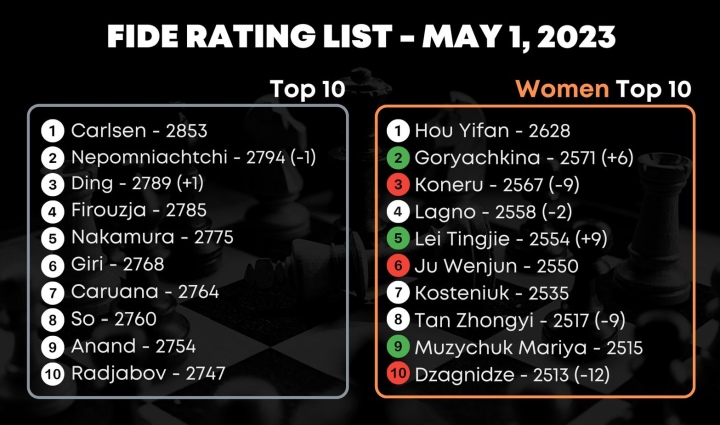
All eyes were on the World Championship match between Ding Liren and Ian Nepomniachtchi last month, so there were no significant changes in the top 10 Open. However, the Women’s top 10 saw some shifts, thanks to the third leg of the FIDE Women’s Grand Prix and the FIDE Women’s Candidates Tournament Final that ended at the beginning of April. The winner of the FIDE Women’s Grand Prix New Dehli, Aleksandra Goryachkina, picked up 6 rating points while the home players Humpy Koneru and Harika Dronavalli and Nana Dzagnidze of Georgia suffered substantial rating losses in this competition. Photo: Liu Yi Usually we see a mirror situation regarding rating changes in matches and the FIDE Women’s Candidates Tournament Final was no exception. Lei Tingjie (pictured above) beat her compatriot Tan Zhongyi and earned 9 rating points, while her opponent dropped this exact amount. Biggest gains in top 100 Open and Women Assaubayeva, Bibisara IM 2464 (+24) Vantika Agrawal WGM 2428 (+21) Zhu, Jiner WGM 2507 (+18) Danielian, Elina GM 2416 (+12) Injac, Teodora IM 2402 (+11) Xiao, Yiyi WGM 2394 (+11) Yakubbaeva, Nilufar WGM 2373 (+11) Gara, Ticia WGM 2359 (+10) Van Foreest, Jorden GM 2689 (+9) Volokitin, Andrei GM 2674 (+9) Although Bibisara Assaubayeva (pictured below) and Zhu Jiner narrowly missed first place in the third leg of FIDE Women’s Grand Prix 2022-2023 due to inferior tiebreaks, they became the primary rating beneficiaries of this competition, earning 24 and 18 points, respectively. Photo: Ismael Nieto Elina Danielian tuned in a very solid performance at the 2nd International Tournament Mikis Theodorakis 2023 and tied for first place, which translates into +12 rating points. Two other strong open events took place across Europe in April: Fagernes Open and Menorca Open. Those who did well in one or both of these events – Vantika Agrawal (+21), Teodora Injac (+11; pictured below) and Jorden Van Feeest (+9) – improved their rating and made their way into this list. Photo: Madelene Belinki Interestingly enough, the winner of the Menorca Open Gukesh D earned just two rating points for his achievement but it helped him to leapfrog Nodirbek Abdusattorov in the top juniors list and climb to second position. Xiao Yiyi emerged as the winner of the Zonal 3.5 Women Championship 2023 in Shenzhen, China and not only picked up 11 points but also reached her career high of 2394. Andrei Volokitin defeated Michael Adams in very exciting UK vs Ukraine Challenge match by a minimal margin and netted 9 rating points.
Serbia wins 2023 IBCA European Team Championship

The 2023 IBCA European Team Championship for the Blind and Visually Impaired took place from April 19-30 in Genova, Italy. Organized by the IBCA and the Italian Amateur Blind Chess Association (A.S.C.I.d.), with the chief organizer Bersan Vrioni, the event brought together 14 national teams from all parts of Europe. The participants used specialized Braille chess boards, talking clocks, and voice recording equipment. The playing venue was located at the Tower Genova Airport Hotel, which allowed the participants to enjoy excellent playing conditions indoors and to take advantage of recreation breaks in sunny weather outside. On a rest day, the organizers kindly offered a free excursion to the Cimitero monumentale di Staglieno, which has been widely praised by Mark Twain and Friedrich Nietzsche and was called “one of the wonders of the world” by Ernest Hemingway. The Pantheon, galleries and colonnades with hundreds of monuments epitomize the extraordinary art of the 19th and 20th centuries in Liguria, especially the tradition of realistic funereal sculpture. Among the tombs in the classical gardens are those of Giuseppe Garibaldi’s Expedition of the Thousand and other heroes of the Risorgimento. Team titles, medals, and board prizes were contested. The final results: Champion – Team Serbia (FM Pavle Dimic, CM Damjan Jandric, Stefan Janjic, Mile Bjelanovic, FM Avram Sretko, Stefan Mitrovic; captain Nikola Ivanovic) – 15 match points, 25.5 game points; Silver medal – Team Poland (GM Marcin Tazbir, IM Jacek Stachanczyk, IM Piotr Dukaczewski. Ryszard Suder, Michal Wolanski, Andrzej Migala; captain Janocz Zyla) ) – 14 match points, 23.5 game points; Bronze medal – Team Ukraine (Vladyslav Kolpakov, Igor Shepelev, WIM Lubov Zsiltzova-Lisenko, Ivan Yatsishin; captain Oleksandr Frantsuzov) – 13 match points, 23 game points. Individual board prizes were won by players from eight countries, with gold medals awarded to: 1st board GM Marcin Tazbir (POL) 2nd board CM Damjan Jandric (SRB) 3rd board Stefan Janjic (SRB) 4th board Mile Belanovic (SRB) Reserve board Roberto Clemente Llamero (ESP) The closing ceremony held on April 29th became a huge celebration for Braille players and their supporters. Non-seeing players, their accompanying persons, captains, coaches, officials, and spectators gathered in the sumptuous hall at the Tower Genova Airport Hotel that was exclusively adorned with beautiful posters and the flags of all participating nations. Several dignitaries attended, including Alessandra Bianchi, representative of the City of Genoa; Antonio Micillo, Representative of the Italian Olympic Committee for Liguria; Diana Tsypina (Canada), IBCA 2nd Vice-President; Rafaele Di Paolo, FSI Regional President; Cristina Minerva, the UICI National Councilor; GM / IO / FST Roberto Mogranzini, member of the FIDE Events Commission; Bersan Vrioni, President of A.S.C.I.d.; Luciano Romanelli, Chairman of the Blind Union of Liguria; Franco Pugliese, Comite Genova Senze Barriere; authorized representatives of municipal agencies in charge of tourism and the affairs of the disabled. The ceremony started with a live rendition of the Italian anthem. The A.S.C.I.d. President Bersan Vrioni highlighted the excellent collaboration between the IBCA, the organizers, and local authorities that made it possible for the participants to meet in Genoa in person and to enjoy chess. He thanked the international team of arbiters and assistants for disabled players for their hard work that made it possible to provide necessary accommodation conditions for persons with disabilities and to hold the competition in accordance with the highest FIDE and IBCA standards. Alessandra Bianchi conveyed the best wishes from the Government of Liguria and thanked all participants and officials for coming to Genoa, She reminded them of the rich history of the place that was the capital of one of the most powerful maritime republics for over seven centuries and became one of the largest naval powers of the continent. For twelve days, Genoa, the capital of the Liguria Region, opened its heart to the disabled players. Antonio Micillo, Representative of the Italian Olympic Committee for Liguria, remarked on the existing synergies between the IBCA, the Italian Paralympic Committee, and the national organizations for the disabled. Events like the Genoa championship play an important role in the social integration of people with disabilities. The IBCA 2nd Vice-President Diana Tsypina thanked the authorities of Genoa and the Liguria Region, the local organizers, the FSI, the UICI, and the A.S.C.I.d. members for all the hard work they put into this important competition. Non-seeing players demonstrated bravery, focus, discipline, and a high level of maturity. Every participant showed fair play and good sportsmanship. The strongest players won their matches and games in an exemplary manner. Diana Tsypina reminded the audience that during the championship, the IBCA held an important meeting. Participants offered valuable suggestions aimed at improving the governance and helping the Association to meet the challenges of the rapidly changing world. The IBCA and its national members – the organizations specifically established for the promotion of Braille chess for the blind and visually impaired – work in harmony with respective countries’ governments, NGOs, national Paralympic Committees, the International Blind Sports Federation, FIDE, and other international associations as partners respecting each other’s core areas of expertise and advancing the goals set in the United Nations Convention on the Rights of Persons with Disabilities, the EU Charter of Fundamental Rights, and similar documents. Cristina Minerva, the UICI National Councilor reflected on the importance of government and societal support for players with disabilities and described how advanced Italy has become in this direction. Chief Arbiter Vadim Tsypin (Canada) announced the official results. The dignitaries presented players and teams with medals and trophies. The winners were met with huge applause. The national anthem of Serbia was played. The closing ceremony was followed by a sumptuous reception generously offered by the Italian hosts. Players, officials, and accompanying persons in all delegations received memorable gifts, souvenirs, and bottles of excellent Ligurian wine. (Information and photos provided by the IBCA and the Genova Senza Barriere Organizing Committee) About IBCA The International Braille Chess Association (IBCA) is the supreme body responsible for chess for the blind and visually impaired. The IBCA is part of the International Blind Sports Federation and an Affiliated Member of FIDE. Founded in 1958, the IBCA has grown to more than sixty countries on four continents. Its major competitions include the Blind Chess Olympiad and the Blind World Chess Championships.
Ding Liren crowned World Champion
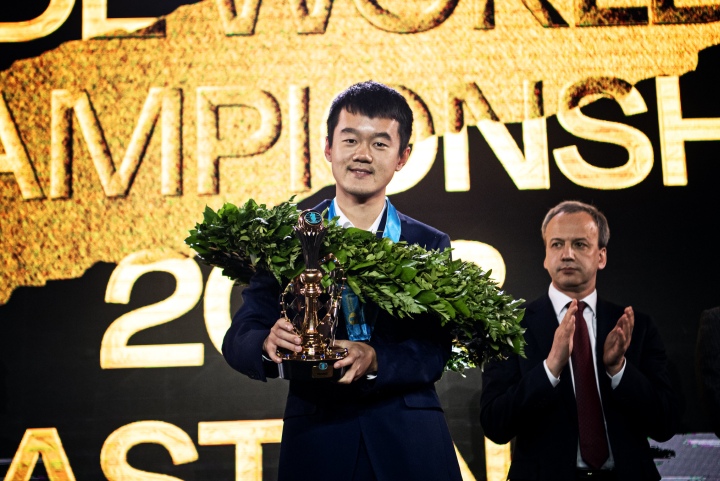
The last act of the greatest chess event on earth was held in Astana. A new era in chess history as Ding Liren emerges as the first player from China to hold the world title in the open section Following a stunning tie-break finale, the chess world championship match came to a ceremonial close in Astana. All the usual elements were there – the musical performances, the speeches, the fireworks, and – the crowning of the new word champion! The ceremony was held at the St Regis hotel – the very venue where for the past three weeks Ding Liren and Ian Nepomniachtchi had been making history in their fight for the world title. The evening started with a performance featuring the traditional music and dance from the Great Stepe, celebrating the culture and heritage of the host country, Kazakhstan. Following the intonation of the FIDE anthem, a short video was shown, highlighting the key moments of the epic three-week chess battle that took place in Astana. Then Altai Kölgınov, Deputy Prime Minister of Kazakhstan, took to the stage. He congratulated Ding Liren on his victory and thanked the event’s supporters. “Such kind of championship is a great motivation for our young generation”, Kölgınov said. Timur Turlov, head of Freedom House, the key sponsor of the match, noted that the event “was much beyond our expectations [as local organisers]. There was a lot of attention from the public all over the world, and was one of the most viewed chess events globally, as millions of people tuned in”. “It was a real thriller in Astana… We’re proud that we found out the name of the 17th world champion here, in Astana. We hope Astana will become one of the world centres of this game”, Turlov said. The ceremony entered its final and key stage as Arkady Dvorkovich, the President of the International Chess Federation, was invited to take the floor. He congratulated Ding Liren “on his remarkable victory”. Describing the match, Dvorkovich said that “we were witnessing a fight that everybody thought was endless, but it had to end… The players showed their commitment to fight until the end and find ways to recover after huge blows. They showed they are great players and the whole chess world is grateful to them”. “We are happy that the match was held here in Kazakhstan, the country located between two chess nations represented in this match, and it proved to be a great place”, said Dvorkovich as he thanked the sponsors, local organisers, volunteers and partners. The match witnessed a historic moment as Ding Liren emerged victorious, clinching the title and paving the way for a new chapter in chess history. “It is the first time in history that the world champion in the open category is from China. After the tradition of quite a few women’s world champions, Chinas is now a holder of both world crowns. This will be a huge motivation for young players in China to develop, grow and compete internationally”, the FIDE President added. “As we celebrate this historic moment, let us also recognize that the game of chess transcends borders, cultures, and languages, and it is through our shared love for this game that we can continue to foster understanding, respect, and friendship among all nations”, Dvorkovich concluded. Finally, it was time for the World Champion to come on the stage and be crowned with his new title. He was joined by Ian Nepomniachtchi, who also mustered the strength to smile and appear calm. This part of the ceremony was fused with Kazakh traditions of putting the chapan – a traditional Kazakh robe honouring a high guest – on the shoulders of the new champion. Then, following the time-honoured tradition in chess, the new champion was crowned with a green wreath. He was then presented with a gold medal and awarded the cup. After the anthem of the People’s Republic of China, performed on the violin by a virtuoso of Kazakhstan’s national chamber orchestra, the new world champion then briefly addressed the audience, thanking the organisers, his team and his opponent for a great event. “I’m very happy to win the match. It was very tough and difficult. I’d like to thank the sponsors and organisers, and I also want to thank my opponent, Ian, for being a great fighter and fighting until the very end”, Ding said. The final stage of the ceremony was officiated by Arkady Dvrokovich, who had the “sad duty” to declare the World championship match officially closed. The next match for the title of World Champion will be held in two years. Text: Milan Dinic Photo: Stev Bonhage Official website: worldchampionship.fide.com/ About the match The 2023 FIDE World Chess Championship match between Grandmasters Ding Liren and Ian Nepomniachtchi took place from 7th April to 1st May 2023 in Astana, Kazakhstan. The match consists of 14 games, followed by a rapid/blitz tiebreak in case of a tie. The time control for the standard games is 120 minutes for the first 40 moves, followed by 60 minutes for the next 20 moves, and then 15 minutes for the rest of the game, with an increment of 30 seconds per move starting from move 61. The first player to reach 7,5 points in the 14 games will win the match. If it’s a tie, the two go to tiebreaks. The prize fund for the match is two million euros, with the reward being split 60:40 between the winner and the runner-up.
Ding Liren makes history, becoming World Champion
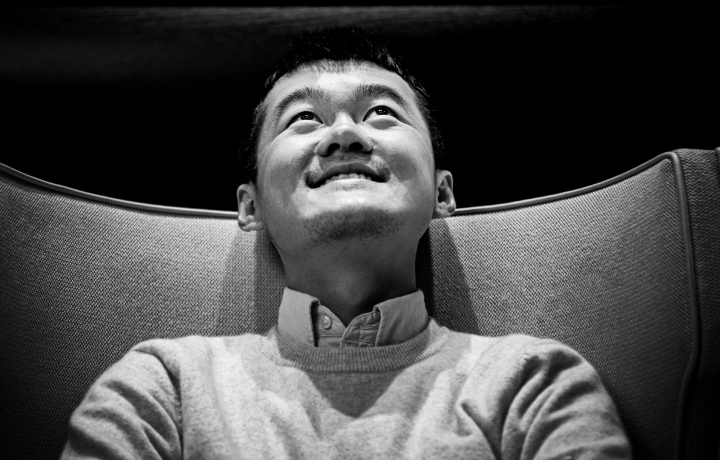
Ding Liren made history by becoming the 17th World Champion in chess, defeating Ian Nepomniachtchi in the final game of the tiebreaks The atmosphere was charged with tension as Ding Liren and Ian Nepomniachtchi faced off at the luxurious St. Regis hotel, where they had been locked in a battle for three gruelling weeks. The hotel was filled with spectators closely following the live commentary, eagerly anticipating the decisive moment. The tiebreak consisted of four rapid games, with a time control of 25 minutes each, plus a 10-second increment per move. If the winner was undecided in the rapid, Blitz games would follow. In rapid chess, which is rated separately from classical chess, Ding Liren is ranked second in the world, just behind Magnus Carlsen. Meanwhile, Ian Nepomniachtchi is ranked seventh. Although Ding has a slightly higher rating, their head-to-head record suggests that they are evenly matched. In the 21 rapid games they have played against each other, Ding has won eight, Ian has won seven, and six have ended in a draw. In the drawing of lots conducted yesterday after the game 14 press conference, it was determined that Ding Liren would lead the white pieces in the first game. Ian was the first to appear in the playing hall, in a blue shirt without a jacket. Ding came in two minutes later. Unlike in the previous days, a trophy was placed close to the players, reminding them what they stand to gain or lose. Game 1: A fantastic queen sacrifice by Nepomniachtchi In the Queen’s pawn game, the two were following the lines of the game of Ding’s second Richard Rapport, which he played against Sam Shankland in 2019. On move six Nepo deviated and the two reached a new position fairly quickly. The players entered a sharp line, with mutual threats and tactics all over the board. 11…exd4 12.hxg4 dxc3 13.Nxc3 Nxb4 14.a3 Bf6 15.Rc1 Bxc3 16.Rxc3 Nc6 After exchanges, White achieved a slightly better position because his pieces were more active and had more control over the centre, but Black was just fine. However, as the game progressed, Ding gained the upper hand, managing to plant an extremely strong knight on d6 and having more open space for activity. White is better, but the position is double-edged. 23.Qc2 and 23.Qb2 were the best options, according to chess engines. Here Ding blundered. 23.Rb1? Nepomniachtchi gave Ding a look which said – “are you sure you want to play that”? Now, White’s advantage disappeared, and the initiative transferred to Black. “The power of prophylaxis – 23.Rfc1! (or 23.Qc2) instead of 23.Rb1? would have killed off Black’s idea and kept a solid edge”, said Grandmaster and BCM columnist Alex Colovic. 23…Ne5 24.e4 b6 25.cxb6 axb6! White cannot take the queen with 26.Rxc7 because of 26…Nf3+ 27.Bxf3 Bxf3 and White cannot avoid checkmate. If 27.Kf1 then 27…Nxd2+ collecting the rook. In both cases, White is lost. Although the situation on the board was extremely dangerous, the evaluation bar gave Black just a slight advantage here. Ding spent some time thinking what to do and played the only move here – 26.Nb5!, trading the queens. 26…Rxd2 27.Nxc7 Bh3 28.Bxh3 Rxh3 29.Kg2 Rh5 30.Rb5! Ding fights back – activating his rook and pinning Black’s rook on h5. 30…Rd1, planning to get a rook to h1, which looks threatening but leads to a forced draw after 31.Nd5 Rdh1 32.Ne7+ Kh7 33.Rxe5 R1h2+ 34.Kg1 Rh1+ 35.Kg2. Former World Champion Vishy Anand praised the players for their initiative and creativeness in the first game of the playoff: “The depth of ideas really impressed me.” Game 2: A small advantage for White, but not enough for a win It was Ian’s turn to play with white pieces. In the closed line of the Ruy Lopez, the two had a positional debate, reorganising their pieces and tiptoeing around the board. Ian introduced a new move 12.Bd2 and got some edge. Until this point, Ian was blitzing his moves. Here, he paused for a while. The queenside is open for Black’s rook. However, the opening of the queenside favours White here as his pieces have more activity. Black needed to find a good plan on how to develop. 14.Nxa4 Nd4 played by Ding, centralizing his knight, offering an exchange and hoping to solidify the centre. 14…a5 or 14…h6 were considered better moves. “Again seems like White has something to work with. Puzzled that Ding keeps aiming for this”, said Vishy Anand. 15.Bc4 Attacking the weak a6 pawn and after Ian opted to take Black’s knight on d4 counting on Black’s weaker pawn structure. 15…c6 16.Nxd4 exd4 17.Bf4. In the subsequent play, White pushed in the centre and got a chance to increase pressure. Here White should have avoided giving up his bishop on f4, instead, Ian took on d6, after which Black is over the hump. The position was further simplified with the exchange of a pair of bishops and the queens. White has a small advantage: Black’s pawns were hanging, and he was behind on time. The only chance for White to maintain tension was 27.g3, driving Black’s knight back, whereas after 27.Rc5 d3! the pawns on the queenside were exchanged, and the two ended in an even rook and knight endgame. Nepo tried to edge victory, but Ding defended well and the game ended in a draw. Game 3: The opposite-coloured bishops matter much more than a pawn Ding opened with 1.Nf3 – the first time this was played in the match. In a popular line of the Reti, the two quickly exchanged pieces in the centre and ended up in an even position. Black just played 12…Nf4 (the move was introduced back in 1981 and also was recently played by such well-known players as Kramnik, Duda, Artemiev and So), forcing White to decide which exchange he wants. 13.gxf4 Qxd2 14.Nxd2 Bxb2 15.Rad1 Bf6 Black has a pair of bishops but still has to develop his queenside. Here Black opted for 17…Rd8. In this position 17…b6, to open the diagonal for the white-squared bishop is considered
U15 and U18 Qualification Tournaments for the FIDE – ISF World School Teams cancelled
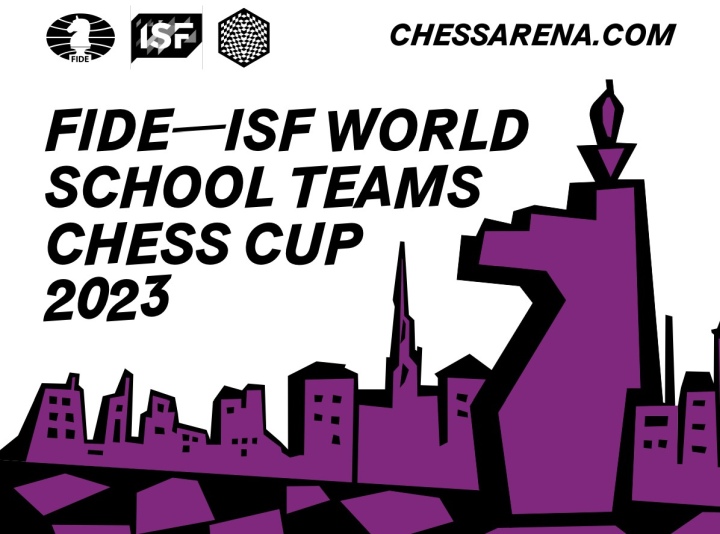
We regret to inform you that, due to technical reasons, the Qualification Tournaments for the U15 and U18 groups of the FIDE – ISF World School Teams have been cancelled. All players who registered to participate in the Qualification Tournaments will be compensated by being automatically entered into the Final Tournaments. The Final Tournaments are scheduled for May 6th at 14:00 UTC for U-15 School Teams and May 7th at 14:00 UTC for U-18 School Teams. FIDE has issued a communication to the participants apologising for the inconvenience this may cause and the disruption of their plans. If you have been affected by this cancellation or you have any feedback you would like to send to the Organizing Committee, please contact us at isf@fide.com. Thank you for your understanding and continued support. Organising Committee,FIDE – ISF World School Teams Online Chess Cup 2023
Ding Liren and Ian Nepomniachtchi head for final tie-breaker

Following a draw in game 14, Ding Liren and Ian Nepomniachtchi are both on seven points and are headed for a final tie-breaker in the FIDE World Championship It was the game which could have decided everything. However, after a failed attempt by Ding to organise an attack early on, the two players went for an exchange of queens transpiring into an even position where Black had a slight edge. In the end, Nepomniachtchi was pushing for a victory in an even rook endgame, trying to drain his opponent’s energy and break him, but Ding defended well. In the first few moves of the Nimzo-Indian Defence, Ding and Nepomniachtchi followed the opening moves of game five in which the Chinese player achieved a decisive advantage but failed to capitalise on it. Ding decided to deviate from that game on move five but the position was calm as both sides were still in the opening phase. However, on move 12, Ding decided to start an attack on the black king’s castle. The move was coated with ideas of making brave and fierce sacrifices on the board, evoking the romantic era of chess where the player’s character and audacity were above calculation and precision. Nepomniachtchi wasn’t fazed by this and brushed off White’s overly ambitious advances. Ding was soon forced to confess that his idea had failed. He then went on for an exchange in the centre, leading to the queens and several pieces being removed from the board. The resulting position was even, with White’s doubled pawns giving Black a slight advantage. Undeterred, Ding opted for another ambitious and risky plan – to temporarily give up a pawn to get some activity – but ended up with his pieces being more exposed across the board. As the game moved on, the nature of the position was becoming ever more uncomfortable for White. Although the world championship was hanging on this game, Ding opted for risky strategies which effectively gave way to Black. At one point Nepomniachtchi achieved a significant advantage but with one imprecise move, he let White level the game. Despite treading a fine line, Ding managed to maintain his position and eventually discovered a splendid combination to simplify the game and reach a rook endgame where he was a pawn down but the position was even. Nepomniachtchi pushed on and Ding had to be very precise to prove he could hold a draw. Just as it seemed we were on the brink of a threefold repetition, Nepomniachtchi decided to play on as he sent his king towards the left flank and allowed Black to capture a pawn on the kingside. Despite things getting sharper and Ian trying to unsettle White, Ding found the precise moves to keep the position even. Nepomniachtchi was gradually chipping away at Ding’s time and nerves, hoping he will break at one point. However, the Chinese player managed to hold. After trying every single approach to find victory, on move 90 and after six and a half hours of play, the final classical game of the 2023 FIDE World Championship match ended in a draw. It remains to be seen whether this long and draining game will impact the players in their tie-break showdown on Sunday. In the drawing of lots it was determined that Ding Liren will be leading white pieces in the first game of the tie-breaks. Here follows a closer look at game 14 of the match. After 13 games which saw seismic swings in the play and the result, the score was even: 6.5 to 6.5. It was all down to the final, 14th game of the match. Ding Liren – who has played the role of the underdog throughout the match – was leading white pieces. Some five minutes before the round, Ding Liren arrived at the board, meticulously readjusting each white piece before scribbling his opponent’s name on the score sheet. As he took a sip of water, Ian Nepomniachtchi strode in – in a blue shirt and not wearing a jacket. The two rivals exchanged a handshake without meeting each other’s gaze. Ding stood up, removing his jacket and placing it on the back of his chair. The atmosphere was charged with anticipation as both players maintained an air of stoic calm, neither daring to make eye contact. The first move was made by MäulenÄşimbaev, The Chair of the Senate of Kazakhstan and Alanna Berikkyzy, winner of the FIDE World School Chess Championship. As the Chief Arbiter Nebojsa Baralic started the clock the two players shook hands. It was the first time their eyes met, but only for a second. 1.d4 Played by Ding.1…Nf6 2.c4 e6 3.Nc3 Bb4 Ian opted for the Nimzo-Indian Defence. This opening was seen once before in the match, in game eight where Ding Liren surprised Nepomniachtchi in the beginning, achieved a winning position but then dropped it all and allowed him to draw. “Quite exciting to see this. It reveals Ding’s attitude – he’s not going to play it safe I guess”, said Grandmaster Daniil Dubov upon seeing the opening moves. “The Nimzo is an invitation for a big game which Black cannot really avoid”, he added. In this opening, Black usually gives up a bishop pair but gets a better pawn structure and easier development as compensation. In the Rubinstein variation after 4.e3 0-0 5.Bd2 Ding chose not to play 5.a3 as in game eight, but a different move which has become popular in recent years. “A super solid 5.Bd2 Nimzo”, former world champion Vishy Anand called it. Ding stood up as he made the move, while Nepomniachtchi mischievously smiled when he saw what was on the board. “I didn’t buy it” said Nepo after the game, explaining his reaction. “I just didn’t see how it would work”. The opponents followed the footsteps of Donchenko and Wojtaszek (2021) up to move nine when Ian introduced a sensible novelty 9…dxc4, which is the first line of Stockfish. From this point on, Ding started spending more time
Ding gives respite to Nepomniachtchi as game 13 ends in a draw
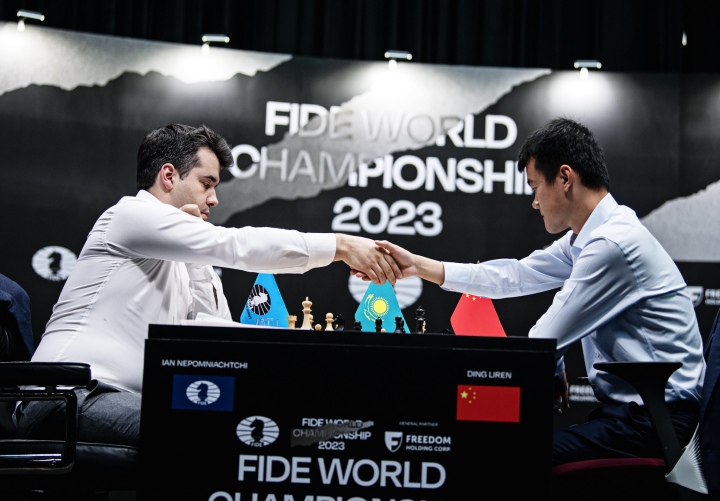
Despite creating a better position as Black, Ding Liren decided to simplify and entered a riskier endgame where he was on the back foot. With both players on 6.5 points, everything hangs on the final, 14th game of the match In today’s game, Ian Nepomniachtchi was White. Following a shocking defeat in Round 12 where he lost a winning position, and with just two more games to go, he was under more pressure – to regain his composure and push with white pieces. Instead of trying to seize the moment and further unsettle Nepomniachtchi, Ding opted for a line well-known by both. In the Closed Ruy Lopez with 6.d3, the two followed the game from round five of the match, which Nepomniachtchi won. It was Nepomniachtchi who decided to deviate from that game on move 10. It was also notable that he played slower in the opening, unlike in other games in this match. As the two reached the middlegame, Ding was the one who emerged from the opening with a more comfortable position: he stopped White from advancing in the centre, had better-coordinated pieces and had more chances to take the initiative. It seemed that things weren’t going Nepomniachtchi’s way and that Ding was on the path of making a huge break. However, after a mysterious move placing his rook in the centre, Ding started losing his way. As in previous games, he was falling behind on the clock and his choice of moves wasn’t the best. In a sharp position, Ding decided to simplify – he gave up a rook for a bishop and a pawn and exchanged the queens. Black had enough compensation, but he completely squandered the advantage. After a few more imprecise moves by Ding, the tables turned completely: the two reached an endgame where White was playing for a win, while Black had to be precise in defending. White was pressing, but neither side gave way. Just after three hours of play and 39 moves, the game ended in a draw. Everything now hangs on the final, 14th game of the match. If either side wins, they will take the crown. If it’s a draw, the World Championship match will go into tiebreaks. Friday will be the final rest day for both sides. Game 14 will take place on Saturday, 29th April at 3 PM Astana time. Here follows a closer look at Game 13 of the match. After a rollercoaster ride in Game 12, both Ian Nepomniachtchi and Ding Liren are teetering on the edge of their physical and mental limits. With just two rounds left and the score level, there is no time to take it slow. Nepo seemed to be in a more difficult position ahead of today’s round: he had a huge shock in yesterday’s game where he was on the brink of winning the title of World Champion, only to throw it all away in just one move. Today he was playing with white pieces and – with this being one of the final two games – he had to push which, after suffering a devastating defeat, is difficult. Ding seemed to be more at ease as game 13 started. 1.e4 Nepomniachtchi stuck to his main opening move. 1…e5 2.Nf3 Nc6 3.Bb5 a6 4.Ba4 Nf6 This line of the Ruy Lopez was played in the match twice so far. Grandmaster Daniil Dubov noted that “from the psychological point of view I don’t like this for Ding at all”, suggesting he should have used this opportunity to do more to destabilize Nepomniachtchi with a surprise given that he is in “a shaky state”. 5.0-0 Be7 6.d3 b5 7.Bb3 d6 8.c3 0-0 9.h3 Bb7 Up to this point, the two were following game five of the match which Nepo won as White. Here Nepomniachtchi opted for 10.Be3, instead of 10.a4 as in game five. This is a new move at the elite level, but the first time this was played was in 1977 in an amateur game. Former World Champion Vishy Anand made the following comment: “Nepo being very sensible, his White openings have worked well, so why deviate? Ding playing very natural moves as well. He doesn’t need to keep provoking today.” Following a series of natural moves Ian decided to break through in the centre but missed an important subtlety. 14.d4 Nepo spent 14 minutes thinking before this move. It was suggested by Grandmaster Robert Hess that, in the long run, White made the mistake of not taking axb5 first as that would open the a-file and the a4-square for his bishop. This decision might come back to haunt White, it was suggested. 14…exd4 15.cxd4 cxd4 Playing 15…c4 despite looking as threatening (with the idea of playing c3) is actually dangerous as White would take on b5, open the file for a rook attack on the knight and press with d5, leaving Black’s pieces hanging and in a risky position. Still, Ding paused here for eight minutes to reassess the situation. “A smart strategical choice”, noted Fabiano Caruana. 16.Nxd4 Nc4! An excellent move by Ding forcing an exchange of knights, with the idea of making it harder for White to defend the e4-pawn. 17.Nxc4 bxc4 and White switched to defense with 18.f3 but after 18…Bf8 Black got an edge. Ding has a strong grip on the centre and better coordination of his pieces. 19.Bf2 d5 It is time to push in the centre. 20.exd5 Nxd5 21.Be4 Gradually, White ended up on the back foot. “He hates this position, I can see it on his face”, commented GM Irina Krush analysing Nepomniachtchi’s body language. This was a critical point and Ding got into a long think here. “He is trying to be accurate. Ian is on the back foot. Ding recognises that he needs to find forward-looking moves. He knows he’s better and he needs to be very precise here,” said Grandmaster Robert Hess. 21…Re5?! Played after 25 minutes. However, this ambitious move seems to be premature. After natural 21…Rb8! White would have been virtually forced to take on d5 giving Black two-bishop advantage

